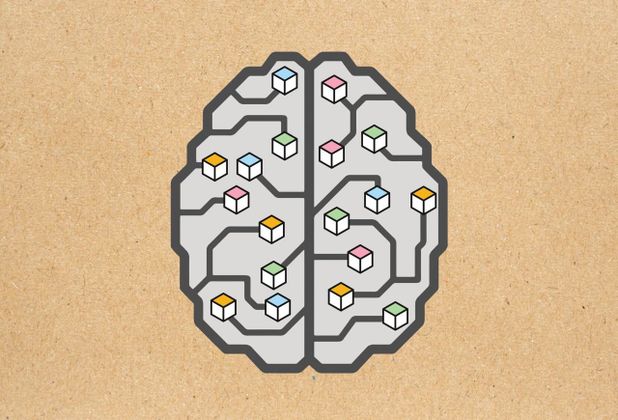The power of artificial intelligence (AI) has taken the tech industry by storm in recent months. Years of computer science modeling through machine learning and deep learning have provided the traction for what has become a wide range of AI use cases. Its capabilities are now evident in everyday use, whether giving instructions to a smart assistant like Siri or sitting behind the wheel of a self-driving car. And with supervised and reinforcement learning, conversant AI systems can handle an articulate back-and-forth discussion with a human. The trajectory of AI’s potential impact on our lives seems long and steep.
Blockchain technology provides a unique opportunity for big data to operate like never before. Previously, a subset of private data would have to be gathered over time until it became rich enough for its artificial intelligence (AI) to run insights.
Coinmarketcap recently published a very informative piece about the merging of blockchain and AI. Without getting too much into why AI and blockchain make so much sense together, the article outlines a dozen or so AI projects on blockchain, from generative NFTs to health and wellness applications. But why? Why does the overlap of blockchain and AI present so much promise in the long term? Let’s first discuss the basics of this powerful combination.
Through behavior pattern observations and learning, traditional AI systems analyze all sorts of operations, particularly for financial institutions and financial regulators. These tasks can range from fraud detection, to audits, to live market research, making way for predictive analytics.
Data to an AI is like a knife sharpener to a blade. The more data, the more accurate and precise the results are — similar to the more you sharpen a knife, the easier it is to cut. The difference is AI will have an infinitely sharpening blade that makes it more accurate over time.
As data on blockchain is much more accessible, sharpening this blade becomes a lot easier. On-chain applications generate more user data that AI systems can analyze almost instantaneously. Blockchain can not only extract rich data from smart contracts, it can also pull data from the relationship between one contract and another, or between contracts and users. This allows for data insight on behavioral patterns like we’ve never seen before.
For those worried about privacy, this will not be private identifying data. The data being analyzed will be similar to public market data provided by exchange and regulator agencies for transparency, the way public companies have reporting standards. The big difference is the on-chain aggregate data being reported will be public and automatically produced instantaneously.
When you couple AI with blockchain technology, there is just so much more data readily available. Blockchain and AI would allow financial regulators to conduct live audits and fraud detection. Decentralized applications on a given blockchain network can maintain a close relationship with AI to root out bot users, analyze user activity, generate complex user stats, and conduct in-depth evaluations of third party application activity.
Data is power. As more applications come onto blockchain networks, their activity and growth can be monitored in new, unprecedented ways. It can be analyzed in real time for insights into new companies, allowing for creation of better growth models or increased profitability.
Real time monitoring of an economy, afforded uniquely by blockchain and AI, can provide insight into macroeconomic systems that is simply not possible through other means. Economic growth in an entire industry could be tracked live, allowing economists and lawmakers to craft relevent policy or detect widespread impropriety. Government subsidies could be doled out while AI monitors for fraudulent activity.
There are over 100 projects on blockchain - or in the pipeline - that incorporate AI. Some of these use - or plan to use - AI as a predictor much like traditional AI platforms. These capabilities range from spot stock trading and hedge funds, to disease prevention and diagnosis. Others are simply expanding AI capabilities in a very general sense, and bringing them on blockchain. But down the line, as more data goes on chain, we will see even more exciting, real-time, extremely practical use cases like what I outlined above. These AI capabilities will only be possible on blockchain networks.
When coupled with the distributed ledger of a blockchain network, the possibilities of AI are nearly limitless. And as no one party has a monopoly on subsets of data, not only will the intelligence be richer, but the AI capacities themselves can grow by leaps and bounds through open source innovation. It’s almost impossible to predict exactly what is in the promising future of blockchain plus AI, but I can’t wait to see what it brings.







Discussion (2)
Awesome article.
Lol..I'm thinking about a use case where weather nodes from plugin oracle predict a rainfall and place an Amazon order for umbrella to be shipped to you before you need it. (settled in stable coin)
Good observations.
Would like to add some of my experiences and observations. Some of my perspectives are based on enterprise side of systems, both blockchains and off-chain data assets in regulated environments, and with all flavors of public blockchains, private and consortium blockchains.
It is actually a very interesting self-enhancing recursive loop of symbiosis between blockchain and AI.
It is NOT just “ the more data the more accurate and precise AI results are”. Under the hood, there is more than that, both in technology as well as adoption at scale for business operations. Also, yes the public data itself is a treasure cove, but the advances emerging to also deal with private data can take it further, for how blockchain and AI can feed on each other.
From my experience, the hyper-productive efficiencies we were targeting actually came much higher than expected, with a combination of cognitive AI, business knowledge heuristics, concepts emerging from the blockchain area around provenance, and a fine-tuned agreement for AI – human SME loop. However, what was rather interesting was that it completely corroborated with high degree of precision where the AI results were trustworthy in business reliable data, and NOT so much in less reliable base data.
A whole bunch of time in enterprises go on addressing key data quality issues, that feeds their AI models, worse-yet, these cleanup are done unilaterally, sometimes without the full context of the parties they work with.
Step 1 - Where blockchains help is in the feeder data to the AI., where some amount of data quality rigor comes up automatically, and more importantly the truth could be in the context of the party that provides the data, or an in-direction to the data on-chain ( in privacy sensitive flows).
Step 2 - With this increased data quality, AI solutions greatly improve their results, and more importantly, if the AI models can keep the explain-ability high ( which is going to be a problem given how fast the field is growing).
Step 3 - That is where blockchain can help again, with detailed provenances to the results, why- what is prescribed, and the level of aggregations that are duly interesting to the counter-parties, and blockchain based analytics, both what was put on-chain, off-chain, specifically indicating the need for areas of focus on more collaborative data convergence working with ecosystem partners.
Step 4 – With the increased focus comes the multi-party protocols which demand the further convergence, and it will have a gradient of friction, some low, medium and high. I see a day soon where insights shared , some might be based on LLMs where enterprises were able to collect that kind of a corpus, and also be able to share that with even tinyML, to address the asymmetry and to see if the models are workable with that asymmetry, and further tune them. These flows will rely heavily on privacy enhancements, specifically light weight ZKPs, that helps converge on decisions.
That is the fine symbiosis loop,
There has been a clear challenge of blockchain adoption albeit the amazing work that has evolved in short time from the industry, particularly on the public blockchain side and the openAI /LLM side. In my view, the concepts above and the tools / techniques that can promote these will drive the high chance of driving adoption and much synergized results as it puts, particularly as the line between public blockchains and enterprises are blurring, where there is a lot of interest from enterprise but also a lot of caution.
I am in the process of writing more on these concepts and the key inflection points observed, and what it takes to get it to better adoption in various industries.
Regards,
Sathya Krishnasamy
linkedin.com/in/sathya-krishnasamy...